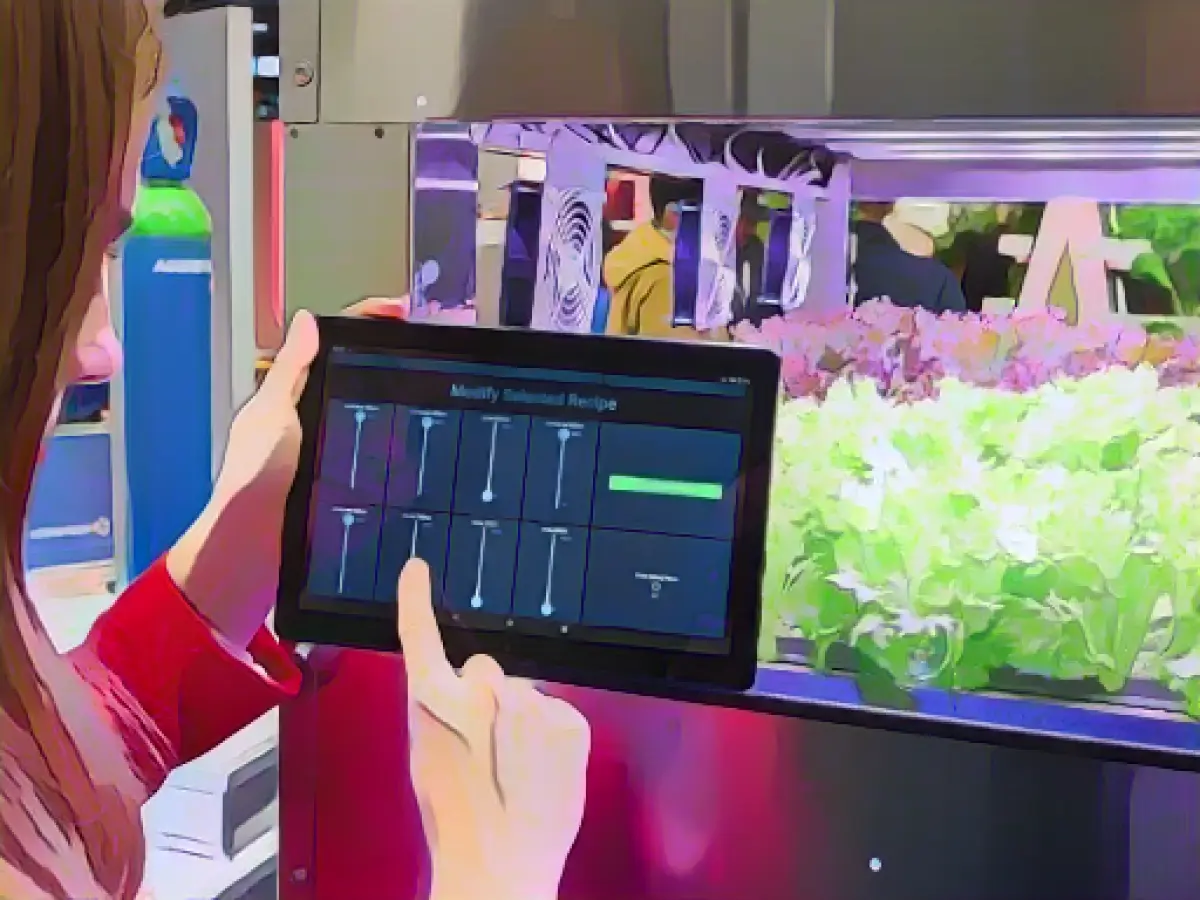Fields in a high-rise building - a cultivation concept with a future?
Countless plants are stacked on top of each other on the shelves in exhibition hall 24 at Agritechnica in Hanover. But instead of the sun, they are illuminated by red or blue LED lights. Whether fruit or vegetables - with this method, plants can be grown sustainably on a few square meters on several levels - this is known as vertical farming. At this year's agricultural technology trade fair, researchers will be presenting the benefits of these "in-house" farms.
A major advantage of vertical farming is the efficient use of space. "Outside on a conventional field, you can produce 2.5 kilograms of sweet potato per square meter, in an in-house farming system we harvest 7.5 kilograms per square meter," explains Finn Petersen from the University of Osnabrück. What's more, production is possible all year round. In the open field you have one harvest per year, in an in-house farming system you get three.
According to the Federal Information Center for Agriculture (BZL), the usable area for agriculture is becoming ever smaller. More and more fertile soil is being lost due to monocultures, the use of chemicals, overgrazing and sealing. Added to this are the consequences of climate change: extreme weather events such as heavy rainfall and drought are steadily increasing and leading to lower crop yields.
Almost ten billion people in 2050
United Nations projections show that around 9.7 billion people will inhabit the earth in 2050 - almost two billion more than now, according to the BZL. Around six billion of these are predicted to live in urban centers. And all these people will need to be supplied with food. According to experts, vertical farming could be a solution. "We need a transformation in the agricultural sector," says Heike Susanne Mempel from Weihenstephan-Triesdorf University of Applied Sciences.
"Another advantage of in-house farming is that you only use as much water for cultivation as you actually need," emphasizes Petersen. This allows water to be saved efficiently. On the other hand, much more is used in the field than in a vertical farming system. "There is no other system that uses as little water as the vertical farming system. Everything that goes into the environment can be recovered and returned to the water cycle," says Mempel.
However, the energy requirement for the Vertical Farming System is very high, she admits. "Solutions need to be found for this." In addition, classic fruit vegetables such as tomatoes or peppers have less potential in vertical farming in Europe: "There are already highly efficient systems in greenhouses and competition with southern regions, so we won't get into an economically profitable area very quickly with vertical farming in Europe," estimates the greenhouse technology expert.
400,000 visitors expected
However, she does not believe that fields in the countryside will disappear completely: "We will continue to need all cultivation systems," says Mempel. "We will still need the open field in the future, we will need the greenhouse and in the medium term, I am convinced that we will also see the vertical farm much more frequently in our agricultural landscape."
Until Saturday, 2811 exhibitors from 53 countries will be showcasing their productsat Agritechnica. 400,000 visitors are expected by the organizer. The main theme of this year's trade fair is "Green Productivity", i.e. how to produce more with less use of resources.
Vertical farming, like the one showcased at Agritechnica, could be beneficial in urban areas with limited agricultural space. With this method, cities can grow their own produce, potentially increasing yield from 2.5 kilograms per square meter in conventional fields to 7.5 kilograms per square meter in vertical farms, as mentioned by Finn Petersen.
Furthermore, at Agritechnica, researchers highlighted the water-saving aspect of vertical farming, with Petersen stating that it uses less water than traditional farming methods while ensuring that all waste is recycled and reintroduced into the water cycle.
Source: www.dpa.com








